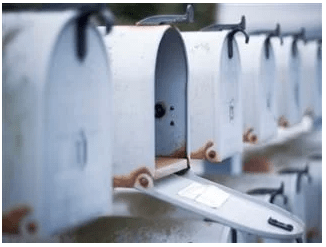By Liviu Tanase
Email lists degrade fast, and that affects your inbox reach. Here’s how to make sure your subscribers are real so you can get the most out of the emails you send.
By 2025, more than 4.5 billion people worldwide will have at least one email address. Email is a profitable marketing channel because it provides a direct and personal line of communication with prospects. But it only works if your emails land in the inbox and allow you to connect with your target audience.
Many obstacles will prevent an email from reaching the inbox, but the most common one is an outdated email list. And email lists tend to decay quickly. Within just one year, almost 23% of the average database becomes obsolete. The percentage may be higher for B2B companies, with people changing jobs more often in the past three years.
This rapid degradation of email data causes poor email deliverability, missed opportunities and a decrease in conversions. Let’s see some of the reasons why – and how you can always have a healthy email list.
How the quality of your list affects email deliverability
Reaching the inbox is closely tied to your sender reputation, also known as your sender score. Internet service providers assign this score to every sender so they can automatically determine whether your emails belong in the inbox or in the spam folder.
Everything you do as an email sender – from the content you send, to how often you send it and how much people engage with it – builds your sender reputation.
Your email list quality plays a vital role here. For instance, if you get many bounces (more than 2% per email) or too many spam reports (more than one for every 1,000 emails), your sender score takes a hit. That means your email deliverability is at risk as your behavior begins to resemble that of a spammer.
While data decays quickly, there are proactive steps you can take to always keep your email list fresh. Here are a few key habits you will benefit from.
Start by verifying your email list
With 22.71% of an email list going bad yearly, this is the best place to start. You want to run your database through an email validation service and see how many of your contacts are still safe to use. This may cause your list to decrease in size – but it will increase in effectiveness. Removing potential bounces and other obsolete emails repairs your sender score and gives you an email deliverability boost.
Prune out dormant subscribers
Nothing impacts the health of your list like invalid and fake addresses, but dormant subscribers can cause your campaigns to land in spam, too. They affect your engagement rates (opens, clicks, forwards), thus telling inbox providers that your content is irrelevant. Furthermore, some of these subscribers may not even be using those addresses anymore. So not only will they not click, but those emails may start bouncing as they get deactivated. The best way to avoid that is to remove disengaged subscribers every three to six months.
Handle complainers with care
Like bounces, spam complaints have a negative impact on your sender score. To Internet service providers, they’re a clear signal that your emails aren’t just irrelevant – they actually bother people. Spam complaints alone can be reason enough for your campaigns to start going to the junk folder.
To prevent that, make sure to remove complainers right away. Emailing those subscribers again will only make things worse. Additionally, you could use email verification to detect users who have a history of reporting many emails as spam. Taking them off your list allows you to mitigate the risk of spam complaints and protect your sender score.
Bonus tips to keep your list engaged and boost email deliverability
A healthy database is key to good email deliverability, but it’s not the only factor that contributes to your sender reputation. To keep your emails landing in the inbox, try to:
- Send your subscribers the content they signed up for. Whether you promised great discounts or educational emails, keep your promise and strive to over-deliver.
- Avoid long breaks from sending emails. You’ll see higher engagement when you’re present in people’s inboxes consistently.
- Invite people to reply to your emails. Replies are the best kind of engagement – to inbox providers, they indicate a highly trustworthy sender.
- Reassess your email service provider every year. Could there be a better one for you out there? Always go with a reputable company that ensures high deliverability.
- Install real-time email verification software on your registration and sign-up forms. That way, you block bad data at the source and keep your email list fresh for longer.
- Be flexible with your copy. Test your subject lines, tone and email length and notice the patterns that tend to get more clicks. The more people react to your content, the more trust you build with inbox providers.
Email lists degrade fast. To increase your deliverability, make sure to follow these tips and get the most out of the emails you send.
By Liviu Tanase
Entrepreneur Leadership Network Contributor. Founder & CEO of ZeroBounce
Liviu Tanase is a serial entrepreneur and telecommunication executive with extensive experience in the creation, growth and sale of novel technologies. He is currently the CEO of ZeroBounce, an email validation and deliverability platform.



